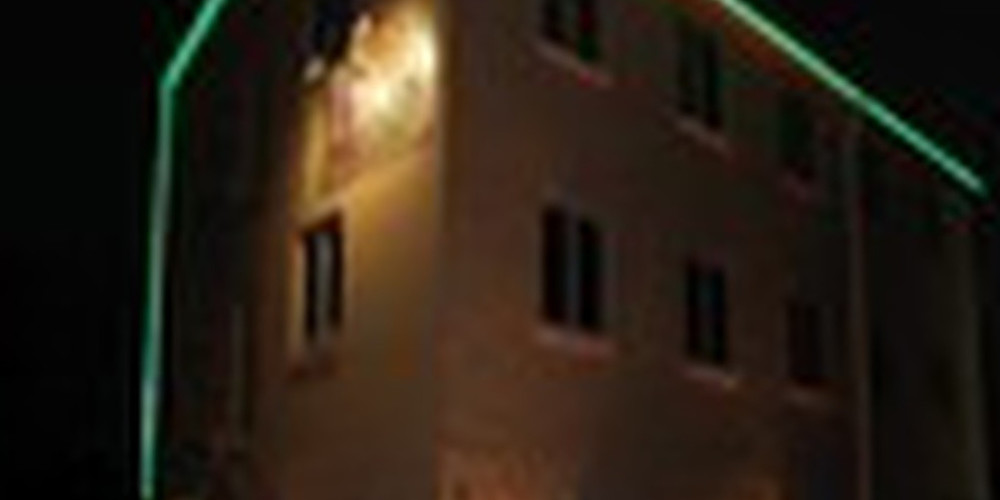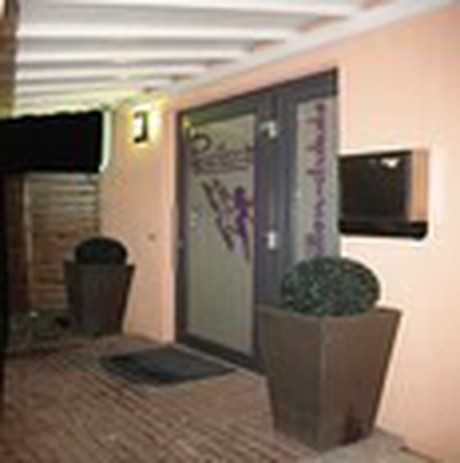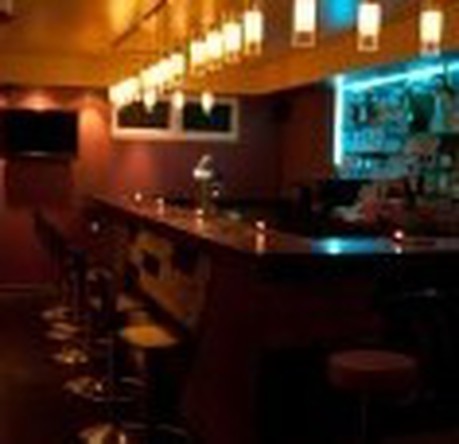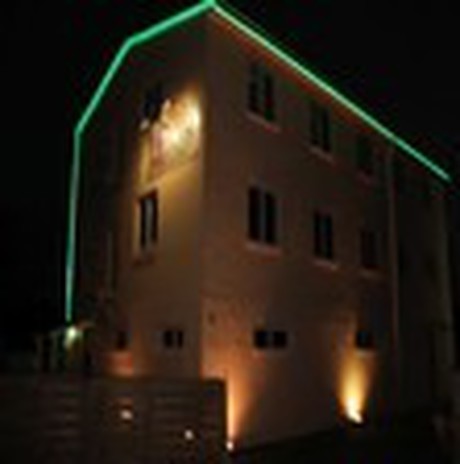
- Ja
- Klimatisiert
- Spielautomaten vorhanden
- Whirlpool Indoor
- Professionelle Massage
- Finnische Sauna
- Wertfächer
- Nein
- Kostenloses Essen
- Kostenlose Soft-Drinks
- Kostenloses Bier
- Bier vom Fass
- Cocktails
- Warmes Abendessen
- Behindertengerecht
- Blickgeschützter Parkplatz
- Kostenlose Parkplätze
- Sport-Live-Übertragung
- Kostenloses WLAN
- Außenanlage (Garten)
- EC-Automat / Zahlung
- Porno-Kino
- SM Raum
- Übernachten möglich
- Whirlpool Outdoor
- Swimmingpool Indoor
- Swimmingpool Outdoor
- Dampfbad
- Solarium
- Live Shows
- Live DJ
- Abholung möglich
Whirlpool nur in ausgesuchten Service-Zimmern verfügbar.
Ohne Nutzung der Wellnessanlagen freier Eintritt.
Escortservice möglich.
AKTUELL GESCHLOSSEN! Der Dublex Saunaclub Kassel (vorher Papillon) befindet sich etwa 3 Kilometer südöstlich vom Kasseler Stadtzentrum im Stadtteil Forstfeld. Der

gepflegte und schick eingerichtete Club betreibt auf zwei Etagen ein Mischkonzept aus Night- und Saunaclub, wichtigster Aufenthaltsort ist natürlich der Barraum mit

Poledance-Podest. Die 5-10 Girls des Hauses lassen sich gern zu einem Piccolo einladen und steigen mit dem geneigten Gast genauso gern bei einer Flasche Schampus in den hauseigenen Whirlpool.

|
|
|
|
| ° | ° | ° |
GESCHLOSSEN!
AKTUELL GESCHLOSSEN!
Paket 1: Kostenloser Aufenthalt im Saunaclub.
Paket 2: 10 EUR inkl. ein Freigetränk nach Wahl.
Paket 3: 30 EUR mit Sauna und zwei Softdrinks oder zwei Bier.
30min 50 EUR.
Line-up Range: Min |5-15| Max
Kassel
Onomastik: Chassalla [Bedeutung strittig; castellum (lat.,= Befestigung); oder: kas- (germ.,= Mulde) -sella (von sali, germ.,= Gebäude)] --> Cassel
erste urkundliche Erwähnung: 913 n. Chr.
Einwohnerzahl: 204.000
Fläche: 106,78 km²
Bundesland: Hessen
Regierungsbezirk: Kassel
KFZ-Kennzeichen: KS
Fluss: Fulda
Der Club Dublex Saunaclub befindet sich in Kassel-Forstfeld.
Kassel, das klingt verdächtig wahlweise nach hessischer Bergprovinz, nach einer einheimischen Pökelfleischspezialität oder nach einem französischen Schauspieler. Aber man kann sich da schwer vertun - Kassel ist eine Stadt, deren einstige absolutistische Pracht noch an vielen Stellen zum Vorschein kommt und die sich locker mit den anderen hessischen Großstädten auf Augenhöhe messen kann. Was das Pökelfleisch betrifft - das ist keine Kasseler Spezialität, es wurde nach dem Berliner Metzger Cassel benannt, der sich genauso schreibt wie der französische Schauspieler.
Wahr ist, dass Kassel sich fast im geografischen Mittelpunkt Deutschlands befindet, eingebettet in einen Talkessel, der landschaftlich reizvoll von den Mittelgebirgszügen des Habichtswaldes im Westen sowie von den südlichen Ausläufern des Reinhardswaldes im Nordosten, dem Kaufunger Wald im Osten und der Söhre im Süden umsäumt ist. Der Blick vom sogenannten Herkules auf die Stadt, deren Wahrzeichen er ist und der sich westlich von Kassel auf der Wilhelmshöhe befindet, ist gelinde gesagt erhebend.
Damit sind auch schon einige von Kassels größten Sehenswürdigkeiten genannt. Die Kasseler Wilhelmshöhe ist ein Landschaftspark von Weltgeltung und UNESCO-Welterbe; sie ist der größte angelegte Bergpark Europas und beherbergt den Herkules mit Wasserspielen und Kaskaden, das Schloss Wilhelmshöhe und die künstliche Ruine Löwenburg. Der Herkules ist eine Kupferstatue des griechischen Halbgottes Herakles und steht in der Sichtachse mit Schloss Wilhelmshöhe auf 515 m Höhe. Das Schloss ist ein mächtiger Klassizismus-Bau, der kurz nach der Französischen Revolution fertiggestellt wurde. Bauherren der zunächst barocken Parkanlage, die später durch Elemente eines Englischen Landschaftsgartens verfeinert wurde, waren vornehmlich die Landgrafen Karl und Wilhelm IX.
Ein weiterer barocker Prachtpark, der hessische Staatspark Karlsaue, befindet sich in der Kasseler Südstadt und beherbergt die Orangerie mit dem Museum für Astronomie und Technikgeschichte, das Marmorbad sowie die Blumeninsel Siebenbergen. Am gegenüberliegenden Fuldaufer befindet sich ein dritter großer Park, die Fuldaaue, die 1981 zur Bundesgartenschau angelegt wurde.
Wie in so vielen deutschen Städten wurde die Altstadt von Kassel im II. Weltkrieg unwiederbringlich zerstört; trotzdem finden sich noch beeindruckende Bauwerke und Sehenswürdigkeiten, dazu gehören das Ottoneum - das erste feststehende Theatergebäude Deutschlands - als repräsentatives Bauwerk der barocken Residenzstadt Kassel, das Fridericianum, der Marstall, das Ständehaus, das Rathaus sowie eine reiche Museumslandschaft. Auf der letzten Serie der 1000-DM-Banknoten finden sich neben dem Abbild der aus Hanau stammenden Gebrüder Grimm, die maßgeblich in Kassel gewirkt haben, mehrere der eben genannten Bauwerke wieder. Sie zeugen von einer stolzen Vergangenheit.
Um 1189 bekam die schon knapp 300 Jahre bestehende Siedlung am Standort des heutigen Kassel die Stadtrechte zugesprochen. 1277 wurde Kassel Hauptresidenz des ersten hessischen Landgrafen Heinrich I. der neugeschaffenen Landgrafschaft Hessen, die für die nächsten Jahrhunderte die hoheitliche Ordnung in Kassel verkörperte. Erst unter napoleonischer Besatzung im Jahre 1813 wurde Kassel Hauptstadt des neu gegründeten Königreichs Westphalen, das von Napoleons Bruder Jérôme regiert wurde. Nach dem Rückzug der Bonapartes ging Kassel wieder zurück nach Kurhessen, bis es schließlich nach dem verlorenen Deutschen Krieg 1866 unter preußische Domäne geriet. In Abetracht der reizvollen Lage der Stadt verbrachte die Familie des Kaisers fortan die Sommermonate in Kassel.
Kassels exponierte Lage an der ehemaligen innerdeutschen Grenze machte die Stadt nach dem II. Weltkrieg auch zu einer Kandidatin für die neue Hauptstadt der Bundesrepublik Deutschland. Nach dem Fall der Mauer rückte dann die zurückgewonnene zentrale geographische Lage im Herzen des wiedervereinten Deutschlands in den Fokus der Verkehrsplanung; bei Kassel kreuzen sich die drei Autobahnen A7, A44 und A49 und für den Bahnverkehr wurde 1991 der neu errichtete Bahnhof Kassel-Wilhelmshöhe eröffnet, der ein zentraler Verkehrsknotenpunkt im ICE-Fernverkehr ist.
In Kassel haben zahlreiche bedeutende Industrieunternehmen eine Niederlassung gegründet. Originär aus Kassel stammen der Erdölkonzern Wintershall, der Erdgaslieferant Wingas, der Kali- und Salz-Produzent K+S sowie die SMA Solar Technology AG. Kassel ist Sitz des Bundessozialgerichts, der Universität Kassel und der documenta, der weltweit bedeutendsten Reihe von Ausstellungen für zeitgenössische Kunst.
Zu den bekannten Söhnen und Töchtern Kassels gehören neben zahlreichen Sprösslingen aus hessischen Adelsgeschlechtern Philip Scheidemann, Elisabeth Selbert, Paul Julius Reuter, Ludwig Mond, Ulrike Folkerts, Hans Eichel, Arnold Bode, Holger Börner und Brigitte Zypries.
Pension Schneider (0,6 Km)
Forstbachweg 59
34123 Kassel
http://www.pension-schneider-kassel.de
Hessischer Hof (1,6 Km)
Kasseler Str. 4
34123 Kassel
http://hessischerhof-kassel.de